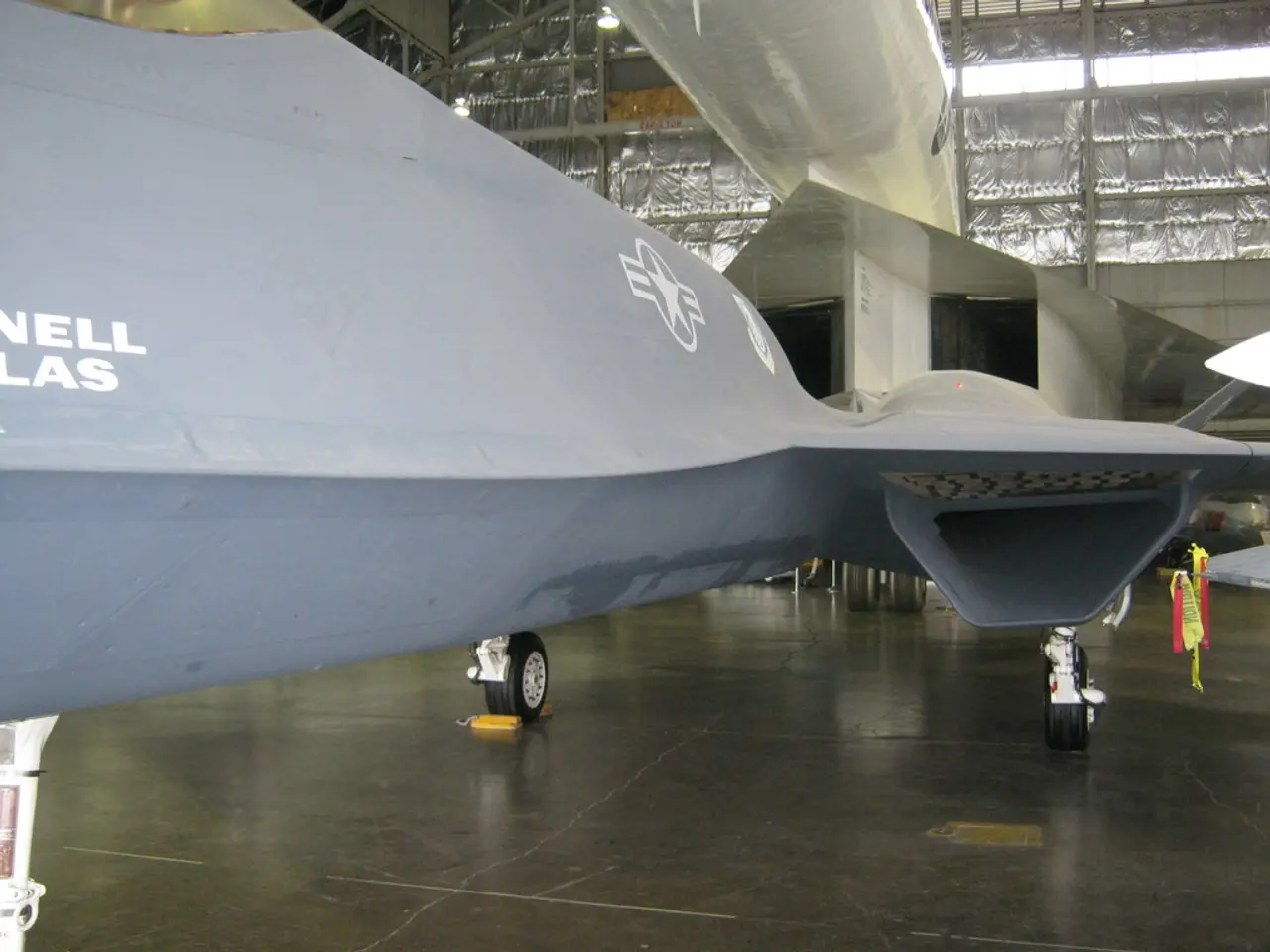Aircraft Balancing and Alignment: Its Impact Explored
In the world of aviation, the center of gravity (C.G.) of an aircraft plays a crucial role in ensuring safe and efficient flight operations. The manufacturer provides an imaginary line called "datum" to help calculate the position of the C.G., which divides the plane perpendicularly in two.
The C.G. is generally located in front of the aerodynamic center to guarantee the stability of the aircraft. However, an advanced C.G. keeps a low angle of attack, but it also makes rotation more difficult, increases wing loading and induced resistance, which translates into less range and higher fuel consumption.
Proper load distribution is essential to avoid adverse flight characteristics such as decreased controllability, increased stall risk, structural overstress, and inefficient fuel consumption. Improper load distribution can lead to loss of stability, structural stress, performance degradation, and safety hazards.
If the C.G. is too far forward, the aircraft can become nose-heavy, making it difficult to raise the nose during takeoff or landing. If too far aft, it can become unstable and prone to stalls or spins. Uneven load distribution can impose excessive stress on the airframe, potentially leading to structural damage. Incorrect centering affects aerodynamic efficiency and fuel efficiency, reducing range and payload capacity. Extreme mis-centering may cause hazardous flight conditions, endangering crew and passengers.
Practical tips for calculating and centering include careful calculation of load distribution, finding the center of gravity, checking limits, adjusting loading if necessary, using published loading charts and graphs, and performing repeat calculations especially after significant changes to loading or fuel burn during flight.
Flying with a delayed C.G. can lead to stall situations without warning, especially in turbulent weather conditions. An excess load severely limits the maneuverability of the aircraft and the pilot's ability to control it. The increase in stall speed makes any simple maneuver difficult and risky, and in the event of moderate or severe turbulence, the structural strength of the aircraft is compromised.
It is essential to keep within the enclosure marked by the manufacturer in the centering table to avoid risks during flight. Secure the load properly to prevent dangerous changes in the aircraft's center of gravity, especially during take-off and landing. It is always advisable to remain as close to a neutral C.G. as possible, but a forward C.G. is preferable to one at the back of the plane.
The Total Take-Off Weight (WTO) cannot exceed the Maximum Take-Off Weight (MTOW) recommended by the aircraft manufacturer. In planes with a tricycle train, the datum line usually coincides with the firewall. Recovery from a spin-off is greatly complicated when flying with a delayed C.G. The maximum load of an aircraft is the authorized weight of goods it can carry in airspace.
Calculations and controls are essential to ensure flight stability, performance, and fuel efficiency, and they form an integral part of flight operations and certification readiness. Aircraft manuals and safety standards often provide detailed procedures and envelope limits to guide loading and centering safely. Proper load and centering management is critical for safe, efficient flight operations, requiring attention to detailed weight and balance calculations and adherence to aircraft-specific limitations.
In light of the importance placed on proper weight distribution and center of gravity in aviation for safe flight operations, the principles of science can be applied to the field of health-and-wellness, emphasizing the significance of balancing weight for overall well-being and fitness. An excessive weight ( analogy to an excessive C.G.) can limit mobility and control, much like an excess load does in aviation, compromising performance and potentially leading to health hazards. Similarly, fitness-and-exercise routines, like aircraft maneuvers, necessitate finding the optimal balance (center of gravity) to ensure efficiency and minimize risks. Proper load management, whether in aviation or health-and-wellness, is paramount for achieving optimal results while ensuring safety and stability.




